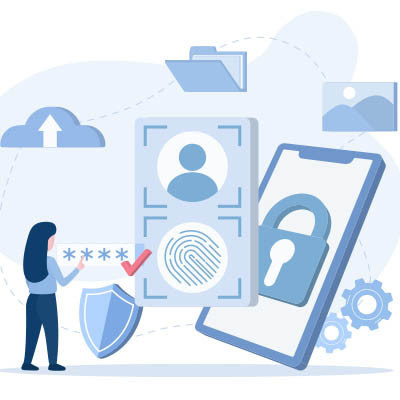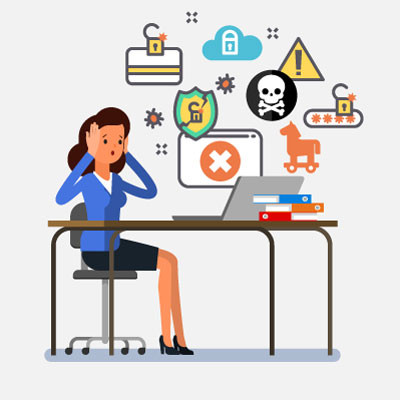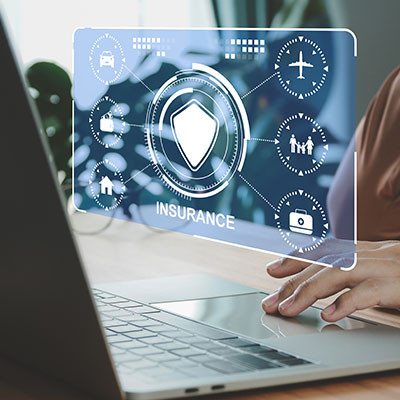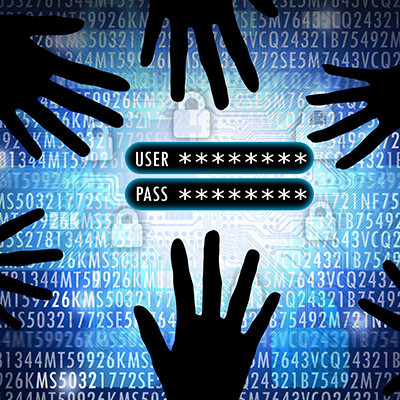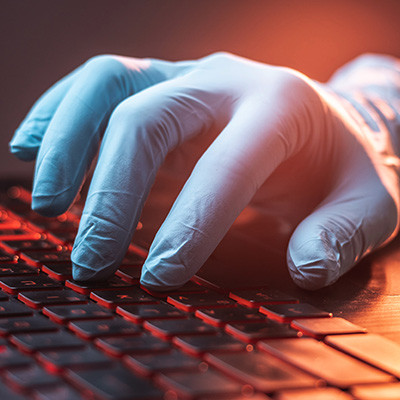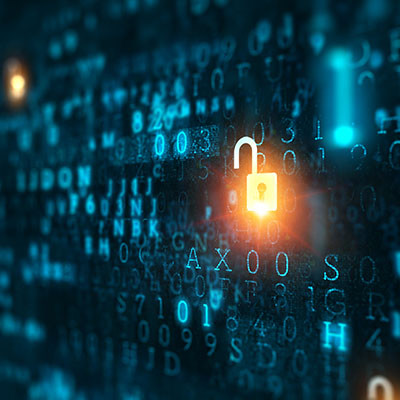Most small businesses have trouble navigating cybersecurity, and that’s because there are too many threats to count. You might even feel like you're a little over your head yourself. Today, we’re bringing to you four of the biggest threats to watch out for on the Internet, as well as what you can do to keep them from impacting your operations.
Telesys Voice and Data Blog
Phishing is a common trick where hackers pretend to be someone you trust to steal your personal information. For example, they might send an email that looks like it's from your bank, asking you to verify your account details. Here's why it's so effective.
Protecting your business’ accounts is something we will advocate for on repeat. You’ll hear us tell you about complex and unique passwords and multi-factor authentication until you’re sick of hearing it. But one tool that our clients sometimes forget is the password manager—an equally useful tool that can help your business keep passwords safe and secure.
Believe it or not, if you were to rank your business’ greatest threats, risk factors, and vulnerabilities, your users would most likely belong somewhere toward the top. Human error is a big challenge to your security simply because cybercriminals understand that your employees are, in fact, human and will, in fact, make mistakes.
Let’s explore how cyberattacks exploit this tendency and how you can better protect your business from the ramifications.
Cybersecurity is crucial for everyone to focus on, both in the professional environment and in their personal lives. That’s why I wanted to put together a list of cybersecurity practices you should encourage your team to follow when they aren’t in the office or working remotely, when their time is theirs.
All it takes is one oversight to potentially undo any benefits your cybersecurity protections and other best practices may deliver. For instance, even if you have things like multifactor authentication in place, a phishing scam or even some malware varieties could potentially give an attacker access to your email… and all the data your messages contain, just sitting in your inbox.
Perhaps predictably, the word “insure” has roots that tie it closely to “ensure,” as it is meant to ensure a level of security after some form of loss. Nowadays, that loss often pertains to data, making cyber insurance an extremely valuable investment for the modern business to make.
However, in order to obtain this kind of insurance, businesses commonly need to meet some basic requirements. Let’s go over some of these requirements now.
I was talking to some colleagues the other day about cybersecurity and its relationship with modern everyday scams, like phone scams and similar things. In my opinion, it’s worth bundling these two topics together, and we found some interesting statistics that we’d like to share.
As the threat landscape gets more concentrated with serious cyberthreats, new next-generation firewalls (NGFWs) have been developed to help stem the tide of negative outcomes that result from cyberattacks. An NGFW is an advanced network security device or software solution that combines traditional firewall capabilities with additional features and functionalities designed to provide enhanced protection and visibility into network traffic. NGFWs are designed to address the evolving and sophisticated nature of cyberthreats, including malware, intrusion attempts, and other malicious activities.
Passwords are one of the most important parts of keeping any account secure, and if you were to gain access to these accounts, you’d have access to personal data, subscriptions, money, and even the victim’s identity. Today, we want to show you just how easy it is to steal a password and gain access to an account.
When it comes to valuable data, hackers will go out of their way to try and steal it, placing businesses in dangerous situations. In particular, healthcare data is attractive to hackers, and considering how lucrative the prospect of healthcare data is, companies need to take extra precautions to protect it. But what is it about healthcare data that makes it so attractive, anyway? Let’s dig into the consequences of potential attacks on healthcare data.
Ransomware is one of the more dangerous threats out there for businesses of all industries and sizes. To help emphasize just how dangerous it is, however, you have to look past the initial threat of having to pay a ransom and look at the other risks associated with it. We’re here to try to get the point across that ransomware is something your business should absolutely be taking seriously.
The Internet of Things is everywhere and that means that it’s important to understand how much of a potential security risk these devices can be. From smart speakers to smartphones, it's important that you understand how these devices can create problematic situations. In this week’s blog we will discuss how you can protect yourself against IoT vulnerabilities at home.
Smartphone applications are in high demand from both a consumer and a business perspective, so it stands to reason that these ecosystems are large in scope, encompassing millions of apps on both the Google Play and Apple App stores. Have you ever wondered how these companies ensure that the apps found on their stores are secure and legitimate?
For millions of people, the rubber ducky is a benign reminder of childhood. Depending on when you were a child, the rendition of Sesame Street’s Ernie singing “Rubber Duckie, you’re the one,” is ingrained in your mind every time you hear the term. Unfortunately, the Rubber Ducky we are going to tell you about today has only fond recollection for people who are looking to breach networks they aren’t authorized to access or deliver malware payloads that are designed to cause havoc.
WhatsApp is one of the world’s most popular messaging applications. With over 2 billion users, WhatsApp is known for its relative security, as it is one of the few messaging applications that offers end-to-end encryption. A modified version of WhatsApp, called YoWhatsApp, has been reportedly deploying malware.
At the beginning of September, it was revealed that a relatively simple issue existed in nearly 2,000 mobile applications that potentially exposed some (read: a lot of) sensitive data. Let’s take a brief, basic look at the situation to see if there are any lessons that can apply to your business.
It’s easy to use the terms “patches” and “updates” as if they mean the same thing, and they are often used interchangeably within the same context. However, understanding the difference between the two can make a world of difference in terms of how you approach implementing each of them. We’re here to clear things up a bit and help you better understand the patches and updates you deploy on a month-to-month basis.
As statistics for cybercrime surge, it’s important to remember that your organization must do all that it can to protect itself. There is, however, a C-suite position that almost exclusively focuses on this task: the chief information security officer, or CISO. Many enterprises have individuals dedicated to the sole task of securing their organization, but smaller businesses might find themselves lagging behind in this regard due to no fault of their own.
As time has passed, cybersecurity attacks have become another way some organizations and nations engage in warfare. You can argue that there is a war going on at all times in cyberspace while hackers—many of which are sponsored by government agencies—try to outdo security researchers at all turns. One such scenario sees customers in the United States and Israeli defense technology sectors becoming the target of “password spraying.”
Mobile? Grab this Article!
Tag Cloud



